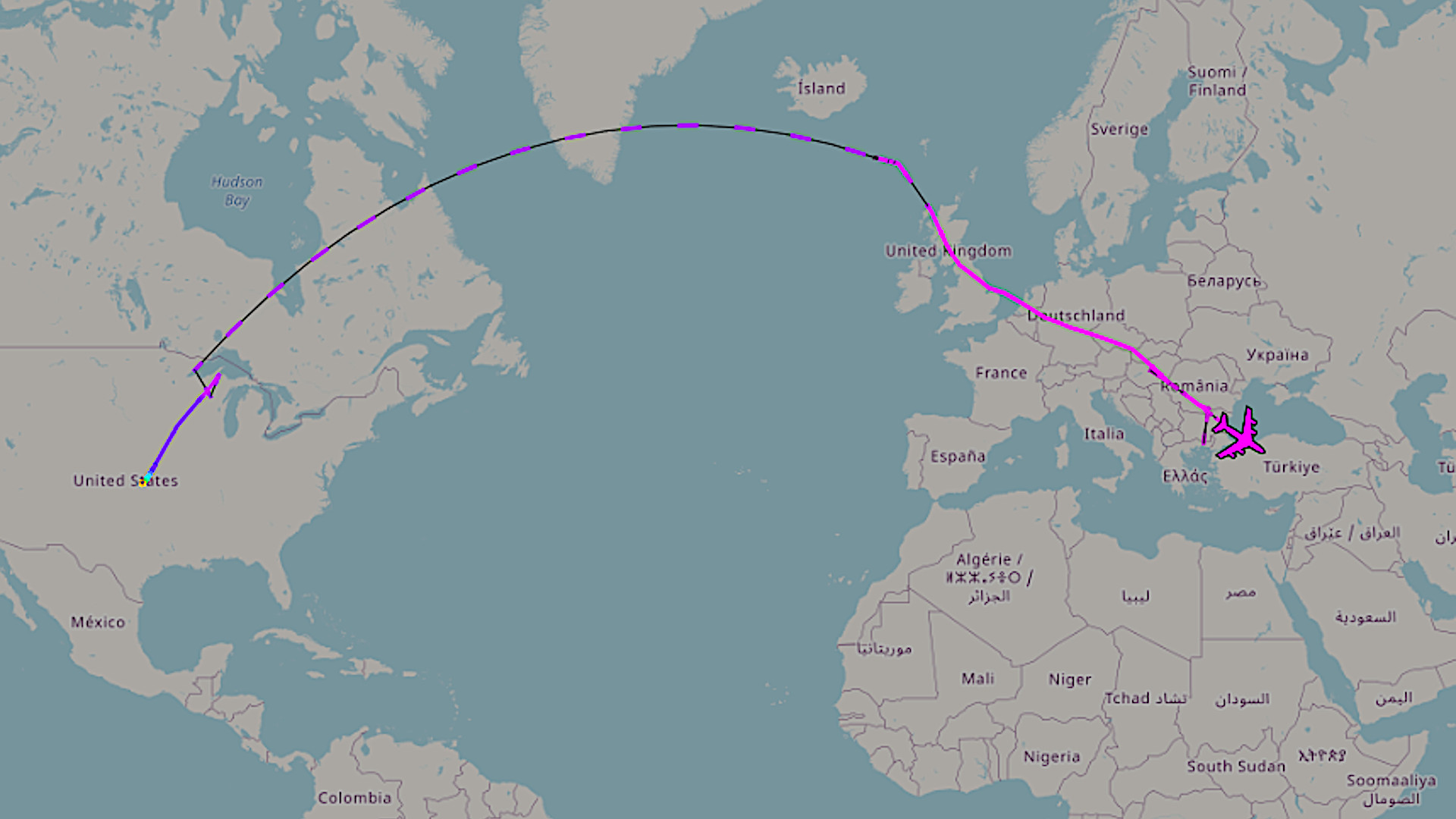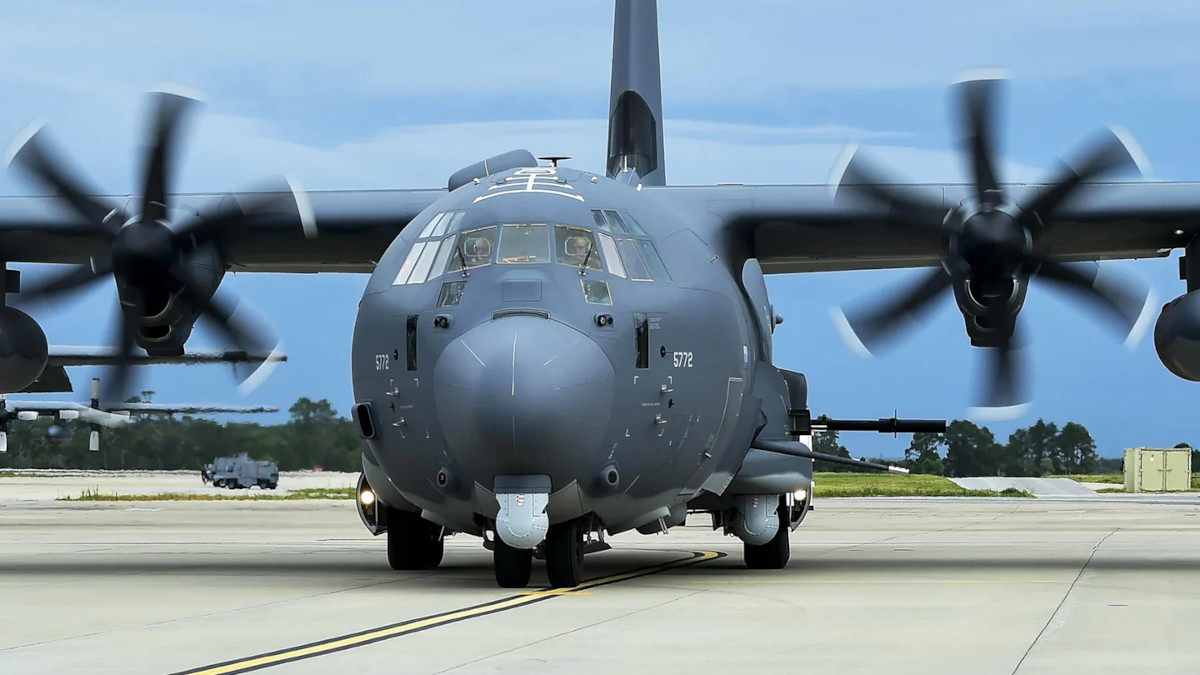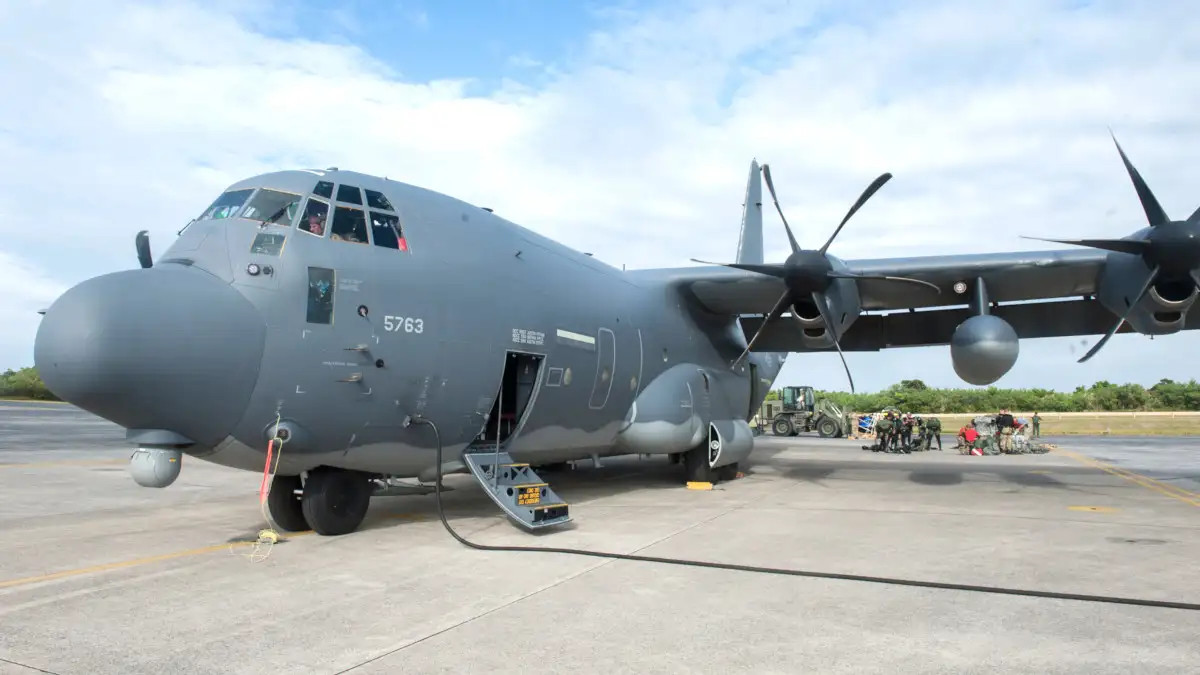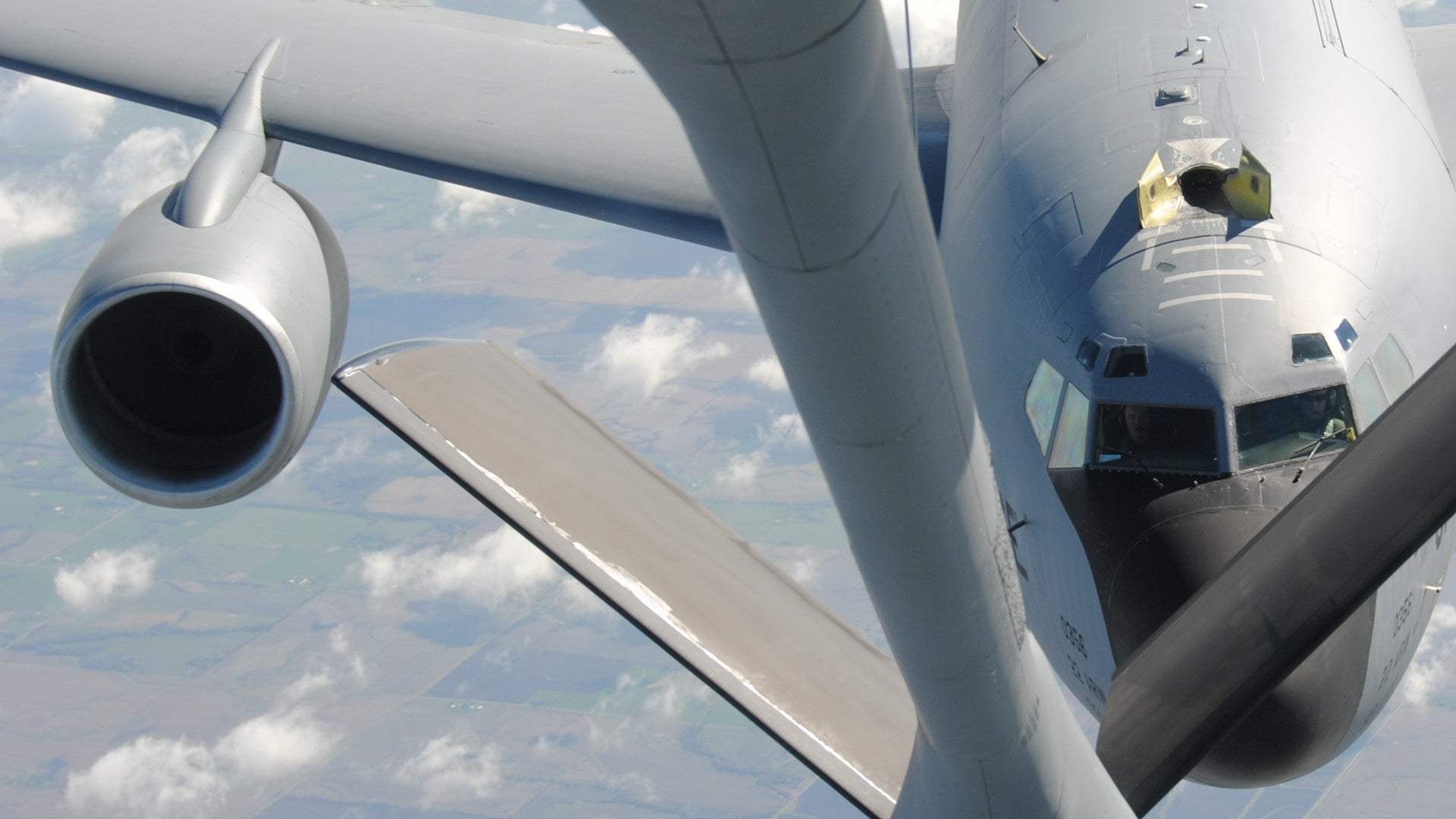Online flight tracking software indicates at least three of the U.S. Air Force’s specially modified KC-135RT “receiver tanker” aerial refueling aircraft have flown non-stop to the Middle East, and possibly beyond, in the past 24 hours. The KC-135RT fleet, which is primarily tasked with supporting special operations missions, is extremely small, comprising less than 10 jets based on publicly available information. Their appearance in the region follows the announcement of an emergency surge of American troops into Afghanistan to help U.S. diplomatic staff and others evacuate the country. It also comes as the security situation continues to deteriorate with the Taliban looking increasingly poised to begin a push to capture the capital Kabul. You can read more about all of this in The War Zone‘s initial reporting here.
Flight tracking data available through ADS-B Exchange shows KC-135RTs with the serial numbers 58-0018, 58-0126, and 61-0293, departing McConnell Air Force Base in Kansas in the past day or so. McConnell is home to the 22nd Aerial Refueling Wing, to which all of the KC-135RTs are assigned. All three planes were using “Reach” callsigns, which are most often used by aircraft on long-distance operational airlift flights.

All three aircraft followed roughly the same route, according to the available data, going first northeast into Canada and then out into the North Atlantic Ocean, before turning southeast and then flying down across the United Kingdom and continental Europe toward the Black Sea. They then continued into Turkish airspace.
After that, the data is less complete, but 58-0018 subsequently appeared in the Persian Gulf region and might have been headed out into the North Arabian Sea. That is the first part of a route that U.S. military aircraft routinely take to get from the Persian Gulf to Afghanistan, via Pakistani airspace.
Exactly what has prompted the need for the KC-135RTs is unclear. Unlike standard KC-135Rs, these aircraft have their own inflight refueling receptacle on top of the forward fuselage right behind the cockpit, which allows them to make use of tanker support themselves to remain on station longer or to conduct longer-distance missions.
The KC-135RTs also have an improved communications suite compared to normal KC-135Rs. While the exact capabilities of those systems are unclear, the Air Force has fielded the Roll-On Beyond line-of-sight Enhancement (ROBE) package, a roll-on/roll-off “gateway” that is able to receive and transmit information across various waveforms, on some of its KC-135Rs. The service has been developing additional systems that could turn those tankers, as well as other types of aerial refuelers, into even more powerful communications and data-sharing nodes, as well. You can read more about these receiver tankers and their capabilities in this past War Zone feature.

The KC-135RT fleet has most often been associated with supporting special operations forces, with their crews actually referred to as special operations air refueling (SOAR) airmen. In keeping with that mission set, SOAR crews are cleared to fly at low altitudes, blacked out, and in environments that require the use of emissions control (EMCON) procedures, commonly referred to as “radio silence.”
They also often operate “stacked up” up with traditional tankers, taking fuel from them and then passing it off to other, smaller platforms. These kinds of operations have involved providing gas to different variants of AC-130 gunships and MC-130 special operations transports, among others, and could be part of the reason they’re now in the Middle East or even over Afghanistan.


AC-130s have been a key asset for providing continued close air support to Afghan security forces as they battle the Taliban, but these aircraft have been flying those missions to and from bases in the Persian Gulf. This involves traveling thousands of miles in each direction and can only limit the ability of those aircraft to loiter over areas of the battlefield for extended periods of time. The KC-135RTs could help keep those gunships on station longer.
MC-130s have also been tracked flying in and out of Afghanistan recently and the receiver tankers could be supporting them, as well. The Air Force’s current MC-130H Combat Talon II and MC-130J Commando II aircraft are both capable, among other things, of acting as tankers for special operations helicopters and Osprey tilt-rotors, as well. The service’s HC-130 Combat King rescue aircraft also have similar aerial refueling capabilities. “stack” including those aircraft and KC-135RTs could provide the necessary support to get those platforms to and from Afghanistan from bases potentially thousands of miles away.
Of course, the capabilities that the KC-135RTs offer could be applied to other contingency operations, as well. Reports indicate that the first elements of an expected force of approximately 3,000 troops are now on their way to Hamid Karzai International Airport in Kabul. The Pentagon is deploying these personnel ostensibly to help with a drawdown of personnel at the U.S. Embassy. Two Marine Corps infantry battalions, and another from the U.S. Army, will up the core of this force. A previous report that the Army contingent would come from 1st Battalion, 194th Field Artillery, part of the Iowa Army National Guard, was incorrect. The unit in question is actually the 1st Battalion, 194th Armor Regiment, part of the Minnesota Army National Guard.
At the same time, U.S. officials have insisted that there are no plans presently to abandon the Embassy entirely, or otherwise help U.S. government employees or other American nationals get out of the country en masse. American citizens have been urged to leave the country on their own as soon as possible.
However, additional forces are already being positioned at forward locations in the Middle East for that purpose should the situation in Afghanistan devolve further. Other countries, including the United Kingdom and Germany, are now also following suit.
Supporting any future large-scale evacuation operation would require a significant airbridge, but the U.S. military presently lacks access to bases in countries neighboring Afghanistan. It has been having to fly sorties of all kinds of missions to and from that country using established bases elsewhere, particularly in the Persian Gulf. As such, the receiver tankers could be very useful for supporting non-stop flights by various kinds of aircraft, including Air Force airlifters, which may now be coming in from well beyond this general region, even from the United States proper.
Such an airbridge is already forming to support the deployments that the Pentagon announced yesterday. Pentagon Press Secretary John Kirby said today that the expectation is that American forces will be able to help thousands of people evacuate per day, if required.
All of this comes amid a string of major Taliban advances across Afghanistan in recent weeks, which includes the capture of multiple provincial capitals just in the past few days. These victories have been accompanied by the fleeing or surrendering of significant numbers of troops aligned with the government in Kabul, as well as the defection of at least some of them to the Taliban. In addition, the insurgents have continued to seize large amounts of weaponry and other materiel, including hundreds of Humvees and other military vehicles, as they gain ground.
The capture of Afghan military bases in a number of major cities has led to the Taliban adding captured helicopters of various types, including U.S.-supplied UH-60 Black Hawks and Hughes 530F Little Birds, as well as small Scan Eagle drones, to its spoils. Many of those aircraft appear to be non-flyable, underscoring the steadily worsening state of the Afghan Air Force, which the U.S. government has continued to tout as a key force multiplier that Afghan forces have in their continued fighting against the insurgents.
There are now reportedly concerns within the U.S. government that the Taliban could move to seize Kabul in the coming days. This would be even faster than the potential timeline in recent official assessments, which had said that the group could surround the capital within 30 days and might be able to capture it in three months or less.
The was already a report from The New York Times yesterday that the U.S. State Department has been trying to seek assurances that the Taliban would leave the American Embassy in Kabul alone if it were to take the city. The fall of Kabul could also give the group control of other sites, including Afghanistan’s central Da Afghanistan Bank, which reported having over $9 billion in Gross Foreign Exchange Reserves last year.
If things on the ground in Afghanistan get any worse, the exact need for the specialized KC-135RTs as part of the larger U.S. military airbridge that is forming now may become more apparent.
Update 9:15 PM EST:
Online flight tracking data now indicates that a total of six KC-135RTs, not three, have made their way in the direction of Afghanistan. There are also indications that additional MC-130Js, as well as other aircraft, have taken a similar route from the United States toward the Middle East.
Contact the author: joe@thedrive.com
